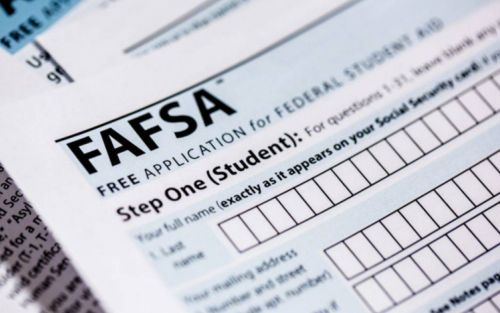When students ask “How to pay for college?” They may get several answers. It indicates that one particular path is not always clear. Different options are available for students, and it depends upon them how they avail the right one. The following eight suggestions will help you to decide “how to pay for college?”
Table of Contents
1. Fill Out the FAFSA
Complete the Free Application for Federal StudentAid even if you are unsure about your eligibility for the aid. FAFSA is the gateway for students to the financial aid centre. If you submit it, you will be in the queue to get the financial assistance. It includes federal grant, student-loan, work or study opportunities alongside school-related financial aid.
You should fill out the application on a priority basis. Quite a few colleges consider the application on first-come and first-served basis. There are individual schools that require students to fill out the CSS profile to check their eligibility for financial assistance.

The CSS profile is like FAFSA, and it evaluates the family’s income and assets to calculate your family’ contribution. The purpose is to determine the package of your financial assistance.
2. Look for Scholarship Programs
To search for a scholarship program, you do not have to wait until you become a senior in your high school. The good news is; it may pay to start earlier. However, you have to serve as a caddie for almost two years to be eligible. It means you have to start caddying in your sophomore year during high school. In this way, you become eligible when you apply at the start of your senior year.
Read More: Scholarships for International Students
Scholarships are different as compared to student loans because you do not have to pay back. Several programs are available; you need to use the scholarship search option wisely to filter your selection. Many scholarship programs ask students to submit FAFSA, whereas most also provide additional forms to complete.

Read More: How To Make Money in College?
3. Select an Affordable Institute
It is much easier to pay for the college if you choose a school with a reasonable fee. In this case, you do not have to bear additional financial pressure. It is worthwhile to start a technical school or community college.
If you decide to enrol in a typical four-year university program, look for the one, which can provide you with the aid. Check all the costs cautiously after scholarships and grants. Net-price calculators are available for you to calculate the payable amount.

You would be in a position to know if you can pay out of your pocket or you need assistance. Remember, if a school displays a lower price, it doesn’t mean it is easily affordable for you. For instance, School A with $29,000 per annum price doesn’t provide any aid, but College B with $50,000-per-annum offers $30,000 in assistance, then College B will be more affordable for you.
4. If You Qualify, Use Grants
According to the Nerd Wallet Study, the high school qualified students who do not go through the FAFSA, end up leaving billions of dollar unclaimed. It will be a big mistake on students’ part if they do not fill out FAFSA. After filling the FAFSA, you need renewal every year during your enrollment in the school.
If you are eligible, you will get Pell money. Additionally, the federal government program is also useful for students. It provides different types of grants that students do not need to pay back. Several states offer grant programs.
You can access the Education Department official website to look for the agencies in your state that deal with the college grants. In the next step, apply for the state grant program you may be eligible for.
Read More: 10 Top Unconventional Ways Students Can Make Money Abroad
5. Find a Work-Study Job
A college job provides students with several facilities. It enables you to earn money, get work experience and develop meaningful connections. The federal work-study program provides funding for part-time employment to the college students who need financial aid.

To apply for work-study, complete and submit FAFSA. In case you qualify, you will go through “work-study” mentioned on your financial aid program. If you are eligible for work-study, it does not mean you would get the money automatically. You need to look for a work-study job within your campus and work enough to earn the financial aid that you are eligible for.
6. Tap Your Savings
Practically, you may have to check all your resources such as your saving and income for tuition-fee, boarding and room alongside other college-based expenses. If you or your family saved money under a 529 plan, which is a state-funded tax benefited college investment account. Get the funds by interacting with the plan’s administrator.
7. Use Federal Loans, If Necessary
You do not have to use all the financial aid that you get, in particular student loan. The rule of thumb says, set a goal for student loan payments that do not go beyond 10% of forecasted after-tax income every month for your first year of the school.
If you need a loan to pay for college, get federal student loans before thinking about the private ones. There are several benefits for students if they go for Federal loans instead of private loans. Through Federal Student Loan programs, you can access loan forgiveness facilities.
8. Get Private Loans as a Last Resort
Do not go for private loans straight away. Explore all the options carefully before finalizing a lender. Ideally, it would be best if you had a lender that gives you the lowest interest rates with excellent borrower protection. For example, easy-repayment plan or the choice to keep your loan in forbearance if you are facing difficulties to make a payment.

It would help if you remembered that after graduation, you have to pay back the money that you borrowed. Apart from federally subsidized loans, the students’ loans accrue interest while you are studying in the school.
It means you have to pay back more than your original borrowings. A student loan calculator will be the right option for you to check the amount you would owe based on your borrowings.









 Top 10 Ways to Pay off Student Loan Quickly
Top 10 Ways to Pay off Student Loan Quickly